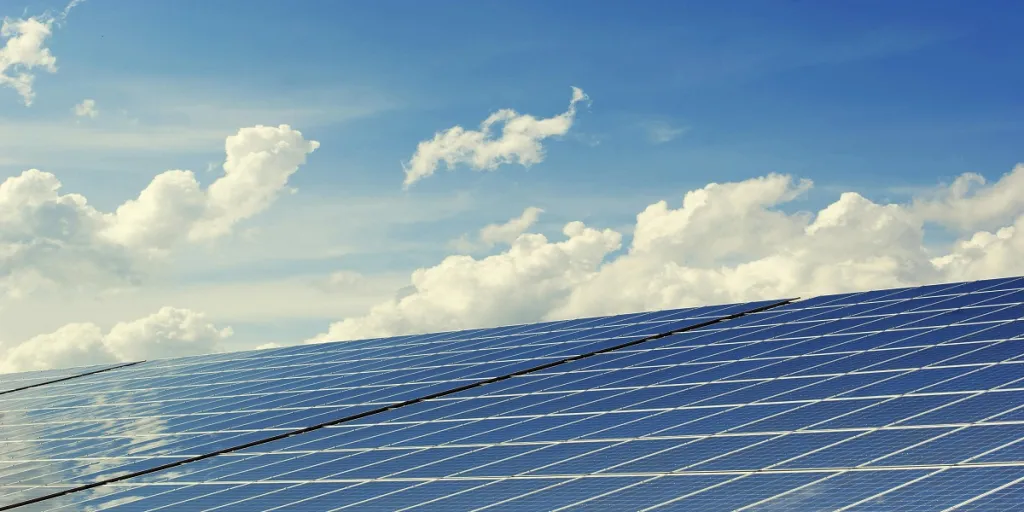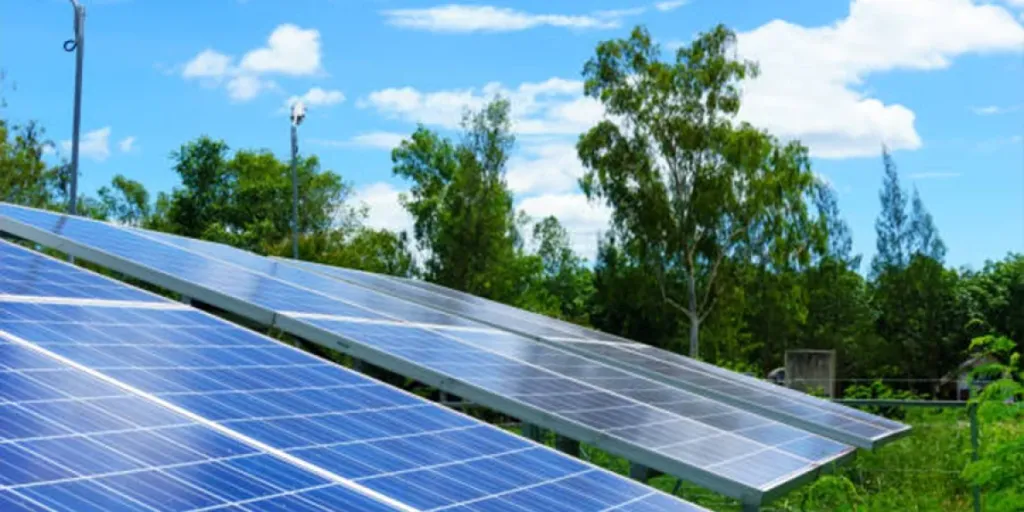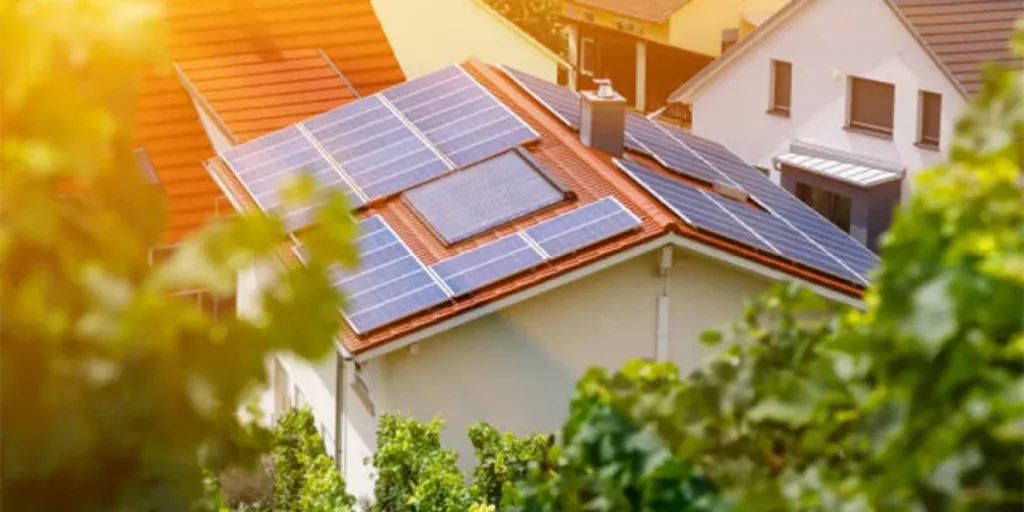Solar shingles, an important class of solar panels, capture sunlight and convert it into electricity. They’re slim and sleek, weighing around 13 pounds per square foot. For context, you’d need around 350 of them to cover a whole roof. Solar shingles are not only energy efficient but also protect the roof and are just as durable as regular shingles.
Solar shingles are typically made from the same semiconductor material as most thin-film solar panels, which makes them flexible and thin, with a conversion efficiency of around 12-14%. Some solar shingles use more expensive monocrystalline silicon, making them more efficient, with a conversion efficiency of 15-20%. In general, each shingle can generate between 13 to 63 watts, meaning that with enough of them, and some storage gear, you could potentially say goodbye to your electricity bills.
In addition, these shingles usually have a lifespan of 20 years or more, depending on the manufacturer and how they are installed. Even so, some companies provide warranties that last for decades, and some variations may even outlast the lifetime of your house.
Table of Contents
Market size and growth
Categorization
Trends and challenges
Other advice for buyers
Market size and growth

The global solar shingle market size was valued at approximately US $285 million in 2021 and is expected to reach US $437 million in 2029, growing at a CAGR of 5.5% between 2022 and 2029, as detailed by DATA BRIDGE. Meanwhile, the global solar shingle sales volume was approximately 1.68 million square meters in 2021 and is expected to reach 2.5 million square meters in 2029. It should be noted that the U.S. and Europe account for 38% and 21% of the market size, respectively, with CAGRs of 11.9% and 12.3%. Therefore, these regions are important markets you cannot ignore.
Categorization
Solar shingles are mainly categorized into glass solar shingles, thin film solar shingles, and ceramic solar shingles. Below we’ll take a look at each in more detail:
Glass solar shingles
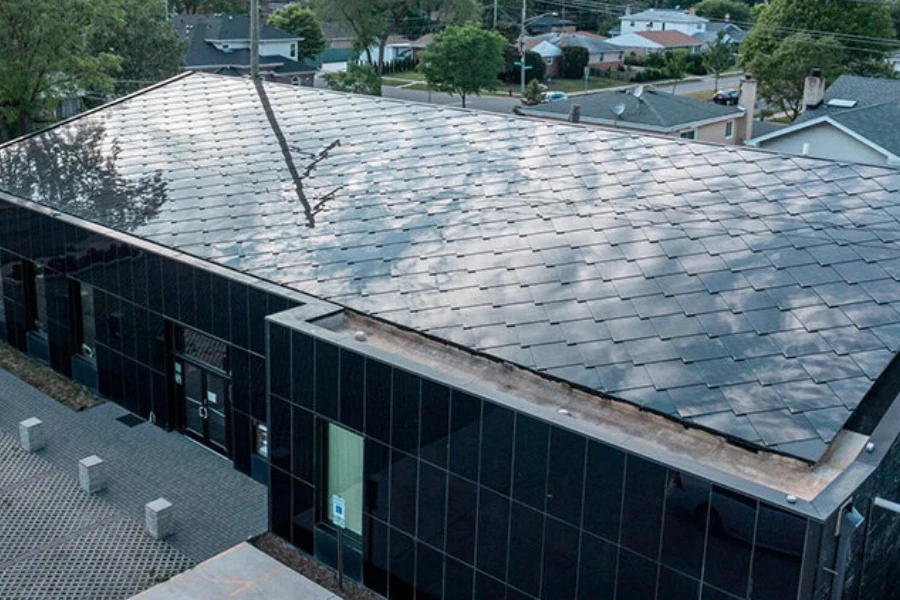
Glass solar shingles consist of solar panels and roof tiles, which are covered with a tinted light-transmitting film over the solar electric panels and then capped with high-strength tempered glass for protection. This type of solar shingle has a wide range of application scenarios and is one of the most common types of solar shingles.
Advantages of glass solar shingles:
- A very high level of transparency, allowing sunlight to shine through directly into the interior of the building. This provides natural lighting and reduces the need for artificial lighting, helping to improve the building’s energy efficiency.
- Their smooth surface does not easily accumulate dust and dirt, meaning that they’re usually easier to maintain and clean than other types of solar shingles
- Their regular window-like appearance means that there’s less need to alter the building’s aesthetic. This makes them suitable for a variety of architectural styles.
Thin film solar shingles

Thin-film solar shingles usually consist of multiple layers of thin film that include semiconductor materials such as amorphous silicon, copper indium gallium selenide (CIGS), or organic polymers. These thin-film materials allow for efficient photovoltaic conversion when capturing sunlight, resulting in high solar energy conversion efficiency.
Thin-film solar roof shingles are classified into three types: curved, flat, and inverted C-type, which can satisfy the personalized needs of most building types around the world.
Advantages of thin film solar shingles:
- Lower manufacturing costs, as they use fewer materials and the manufacturing process is more cost-effective
- Lighter in mass, they can be more easily integrated into building facades, roofs, or other surfaces, with the potential for a wider range of applications
- Insulation and cooling are also more impressive, with buildings fitted with thin-film power curved shingles showing indoor temperatures 5-10 degrees lower than those with conventional shingles during the summertime
- Capability to generate electricity even under low-light conditions, resulting in relatively good performance on cloudy days or in dark environments
- A service life of 25-30 years or more, with compression resistance, waterproofing, and impact resistance that are far superior to traditional shingle performance
- A wide range of applications, with broad market application space in commercial public buildings, self-built houses, public stations, and other fields
Ceramic solar shingles
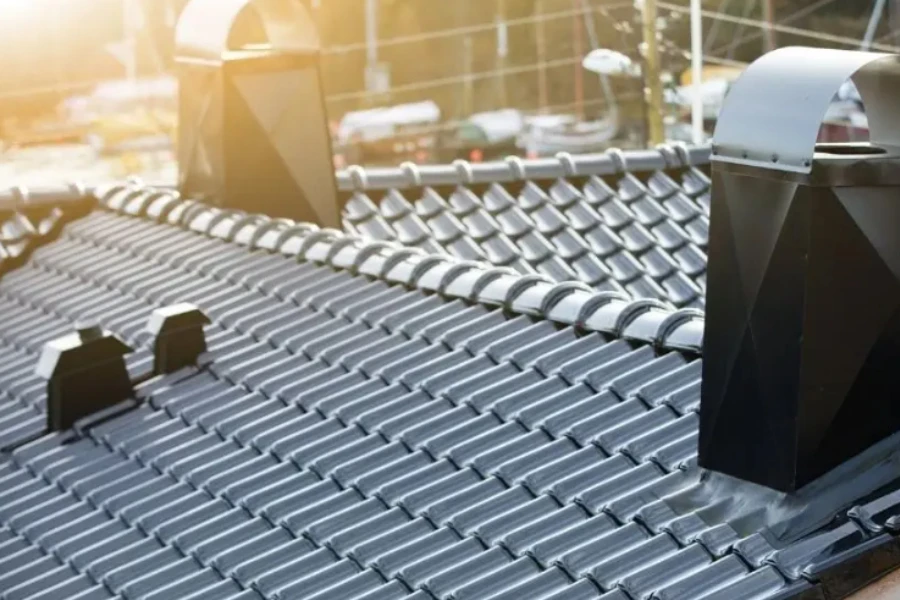
Ceramic solar shingles consist of a solar cell module and ceramic shingles with a skeletonized platform, meaning that the power generation function of the solar cell module can be added without altering the original architectural style of the building.
Advantages of ceramic solar shingles:
- A water penetration rate of less than 0.5%, which is one-tenth of that of ordinary architectural shingles. Therefore, it is very difficult for water to penetrate into the interior of the shingles.
- A bending strength of up to 5000N, which is more than three times that of ordinary building shingles
- The module is made of 3.2mm low-iron tempered glass, so they can withstand the pounding of heavy objects such as hailstones
- The sintering, low-temperature compression molding, and high shingle strength is achieved through specially formulated ceramic materials, and the production process is low energy-consuming and pollution-free
- The photovoltaic module is installed into the substructure, knitting the solar panel and the building material together before being directly applied to the roof. This is then installed to the roofing structure just like ordinary roof shingles to maintain the architectural aesthetic.
- Can be implemented in public facility areas as well as harsh-climate areas due to their high-intensity properties
Trends and challenges
Here are some of the trends related to these new solar technologies:
Trends
Efficiency improvement: The development of solar panel materials and the related improvement of design schemes help capture and convert solar energy more efficiently and improve the power generation performance of solar shingles.
Aesthetics and diversity: With increasing market demand, solar shingles will come in more diverse designs to satisfy the needs of different architectural styles and personal aesthetics. Flexible solar shingles, for example, are designed to be curved and bendable, making them suitable for a variety of curved surfaces and applications, including building facades, automobile roofs, and portable devices.
Industry-driven: As a part of building integrated photovoltaic power generation (BIPV), solar shingles will also become more widely applied via the further promotion and application of BIPV technology.
Energy storage integration: Some solar shingle manufacturers are developing shingles with integrated energy storage systems, allowing for the storage and use of solar energy, ensuring power supply during the night or on cloudy days.
Smart monitoring: Solar shingles are becoming smarter thanks to monitoring capabilities that enable real-time tracking of solar energy production and remote management.
Cost reduction: With the improvement of relevant technologies and the popularization of large-scale production, the cost of solar shingles is expected to decrease gradually, which will make them more competitive in the market.
In addition, here are some of the challenges:
Challenges
Initial cost: While the long-term benefits of solar shingles are significant, their initial investment costs should still not be ignored. They can be more expensive compared to conventional solar panels.
Installation and maintenance: Solar shingles require more specialized skills and knowledge to install and maintain than traditional roofing materials. They also need to stay efficient and stable over many years. Therefore, long-term performance maintenance and monitoring is essential.
Market acceptability: Despite the growing mature technology of solar shingles, consumers in many countries and regions are still doubtful about their efficiency. Therefore, increased awareness as well as popularization of these products must also be built.
Other advice for buyers
Finally, let’s take a look at some of the advice for buyers of this technology:
Know the product you’re buying: Understand how solar shingles work, including their efficiency, longevity, and other key technical indicators, before making a purchase. Carefully consider your project size, budget, energy requirements, and installation environment. This will help you choose the most appropriate solar shingle type and specification for your needs.
Select the proper type of solar shingle: There are different types of solar shingles, including glass solar shingles, thin-film solar shingles, and ceramic solar shingles. Choose the proper type according to your project requirements and budget.
Consider the location and weather conditions: Some areas have more sunlight exposure, and others may have more frequent instances of rain, snow, or storms. Choose a solar shingle that is best suited to the local environment.
Choose your suppliers carefully: Study up on a supplier’s reputation, product quality, and customer feedback. Choosing a reliable supplier is key to ensuring the success of your project. In addition, make sure you understand the warranty policies and after-sales services offered by them as this will provide backup in the case of any issues.
Compare quotes: Instead of contacting just one supplier, compare quotes and terms with multiple suppliers. This will help you get more competitive prices and terms.
Policies and regulations: Check out the solar policies and regulations in your area. This may affect the viability and recoverability of your project.
Finally, if you’re looking for experienced solar shingle suppliers, look no further than the huge collection of manufacturers on Alibaba.com.
